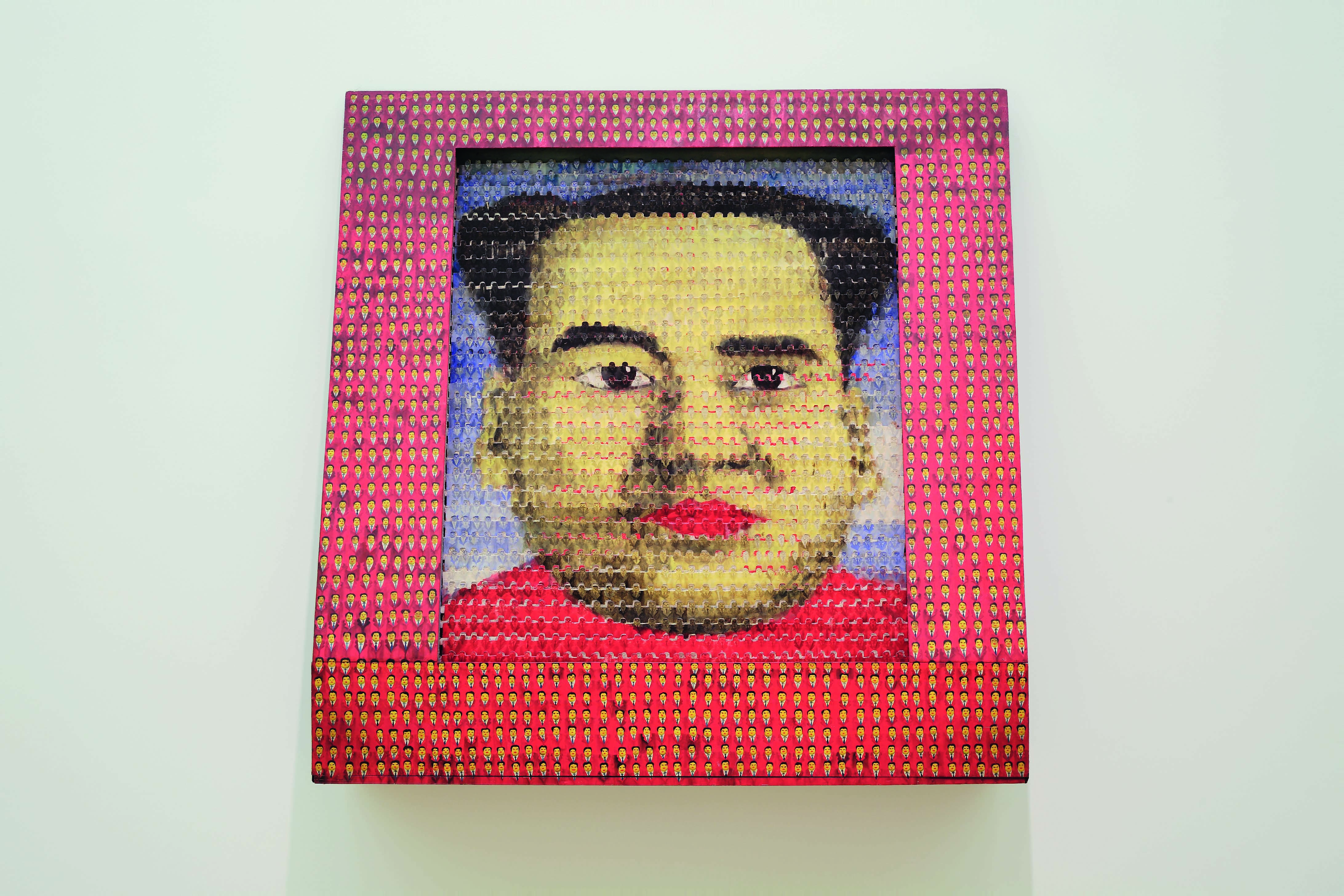Thomas Bayrle
Mao, 1966
Artist
Thomas Bayrle
Title
Mao
Year of creation
1966
Technique and dimensions
oil on wood, construction/engine, 145 x 148 x 32 cm
Year of acquisition
2016
The Great Mao (1973) by Andy Warhol from the Marx Collection is undoubtedly one of the most internationally famous works in the Hamburger Bahnhof today. The fact that the work created by Thomas Bayrle in 1966 has now been acquired for the Nationalgalerie collection is a real stroke of luck. The purchase not only secured a key work by the artist, but also a historical icon of German pop for Berlin and the public. It's hard to imagine a better complement to Warhol's Mao. In the machine object Mao from 1966, hundreds of small figures form the “super form”. An electric motor moves the individual figures up and down, allowing the portrait of Mao to merge into the red star and then calmly transform back into the image of the Great Chairman. The interplay could continue until the drive collapses or a figure falls out of line due to exhaustion and blocks the entire picture.
“Out of a 'whim' that I can no longer explain exactly today, I built/made/painted a 'machine' in which hundreds of athletes do gymnastics behind the portrait of Mao Tse-tung,” said Bayrle. Sooner or later the viewer feels like the biologist who examines an anthill and doesn't know what to look at first. It is impossible to observe the individual animal and the flow of movements throughout the entire structure at the same time.
By 1966, Bayrle, born in 1937, had developed nine additional machines, which art theorist Bazon Brock calls “supercatapults.” They depict Western consumers brushing their teeth, eating ice cream, drinking beer, marching, shaving - they always form an image in the same movement. Looking back, the artist states: “At the time I was actually only interested in Siegfried Kracauer's 'Ornament of the Crowd'. I paid little attention to ideological differences and - against the protests of my left-wing friends - mixed up communist and capitalist elements and content. According to the motto 'technical patterns on the one hand / organic ornaments on the other', in my imagination East and West interweave like warp and weft into one and the same fabric.”
Andreas Bee
